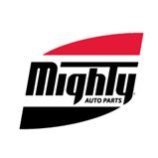-
Welcome to Auto Parts Forum
Whether you are a veteran automotive parts guru or just someone looking for some quick auto parts advice, register today and start a new topic in our forum. Registration is free and you can even sign up with social network platforms such as Facebook, X, and LinkedIn.
Lean Fuel Trim Codes: They Can Challenge the Experienced Technician
-
Similar Topics
-
By cey146
I am looking for a good part number for a fuel line. 2007 Chevrolet Silverado 5.3L factory markings of GM 213M type H, on the hose.
I ruined the 90 degree hose connection, which fastens to the fuel pump. Need to replace the hose while changing out the fuel pump.
Thanks for your help.
-
By Mighty Auto Parts
The post
link hidden, please login to view appeared first on link hidden, please login to view. When diagnosing engine performance complaints such as misfire symptoms, be advised that several systems and components can contribute to those symptoms. When considering single or multiple misfire codes, some checks may seem farfetched but trust me if not all are considered the symptoms can elude the most experienced technician, resulting in a misdiagnosis. When this […]
The post
link hidden, please login to view appeared first on link hidden, please login to view.
link hidden, please login to view -
By carbdoc
I cannot find a remanufactured brake booster for my 1978 Dodge D-150 truck with 400 c.i.d. engine to save my life! Yes, I can send mine out for rebuilding and hope that it comes back correctly repaired (or comes back at all), but I don't want to take my truck completely out of service while I wait for it to (hopefully) be correctly rebuilt. I would, however, gladly settle for a "loose" rebuildable core.
If anyone reading this has a rebuildable core that they will sell to me, I would be quite grateful.
Jeff
-



Recommended Posts
Join the conversation
You can post now and register later. If you have an account, sign in now to post with your account.
Note: Your post will require moderator approval before it will be visible.